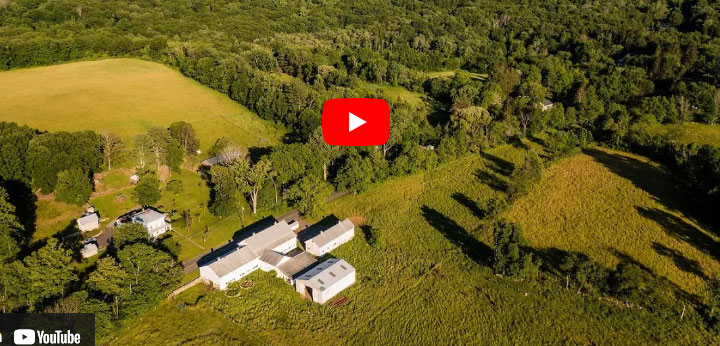NCLC’s annual meeting and holiday party was a time to celebrate volunteers, partnerships, and share conservation goals for the region. More than 60 members from NCLC and from land trusts throughout the region gathered at the Kent Community House on December 4 and enjoyed refreshments and good conversation.
Board members in attendance included NCLC board president Hiram P. Williams and vice-president Margery Feldberg, who will assume the role of president when Williams steps down in January.
Williams, who has been the head of the board for 12 years, commented, “I feel good about where the organization is and has accomplished and I am excited about where we are going.” His proudest accomplishments have been building an excellent staff, led by Executive Director Catherine Rawson, and a dedicated board of directors. “The combination of the two is going to enable us to meet some pretty significant conservation challenges in the next ten years,” he said.
For her part, Feldberg is looking forward to her new role. “Our area has been discovered and there is a lot of pressure, but we are confident we can continue to preserve and protect space. We are scaling up to triple our pace of conservation between now and 2030 and we look forward to the challenge,” she said.
Amanda Branson, NCLC’s director of operations and finance, reviewed highlights from the year and spoke about the need to increase the pace of conservation in the coming years. The State of Connecticut has a goal to protect 21 percent of the state’s lands and water by 2023. The state intends to protect 10 percent and land trusts and other partners are tasked with protecting 11 percent. Based on the State’s current pace, it would take 65 years to reach this goal. Branson explained that land trusts have done extraordinary work to advance conservation and that any hope of reaching the State’s goal rests on land trusts.
Members of area land trusts who attended the event expressed appreciation for the help they receive from NCLC, including Julie Stuart of the Bridgewater Land Trust, who commented, “I came to the meeting to learn from the best, I appreciate everything that they do.”
Branson took the conversation a step further and reported on NCLC’s Pace of Conservation Report, an analysis of the collective conservation of the region’s land trusts within the 30×30 framework. This global conservation goal calls for 30 percent of the earth’s lands and waters to be conserved by 2030. NCLC aggregated transaction data of 19 land trusts working in Litchfield and northern Fairfield Counties between 2010 and 2020 and found that during this period land trusts protected 9,772 acres. The Pace of Conservation Report is also evaluated the role of lands that have some protection against development but are not permanently protected. This category includes water company lands and some privately owned recreational lands. Including these, “quasi-protected” lands in combination with the collective work of our region’s land trusts, achieving a 30×30 for Northwest Connecticut is possible. NCLC set a goal in 2021 to triple its pace to protect 20,000 acres by 2030 in concert with the area’s 22 land trusts and communities
The presentation concluded with recognition and celebration of the more than 90 volunteers who donated over 1,000 hours of their time to NCLC’s trails, preserves, and public events.

Founded in 1965, NCLC is the largest land trust in Connecticut, protecting 13,000 acres of vast, connected natural areas in Litchfield and northern Fairfield counties. The lands include 21 public hiking preserves, 41 working farms, and over 3,000 acres of habitat for rare and endangered species, and 500 nature preserves in 17 towns.









